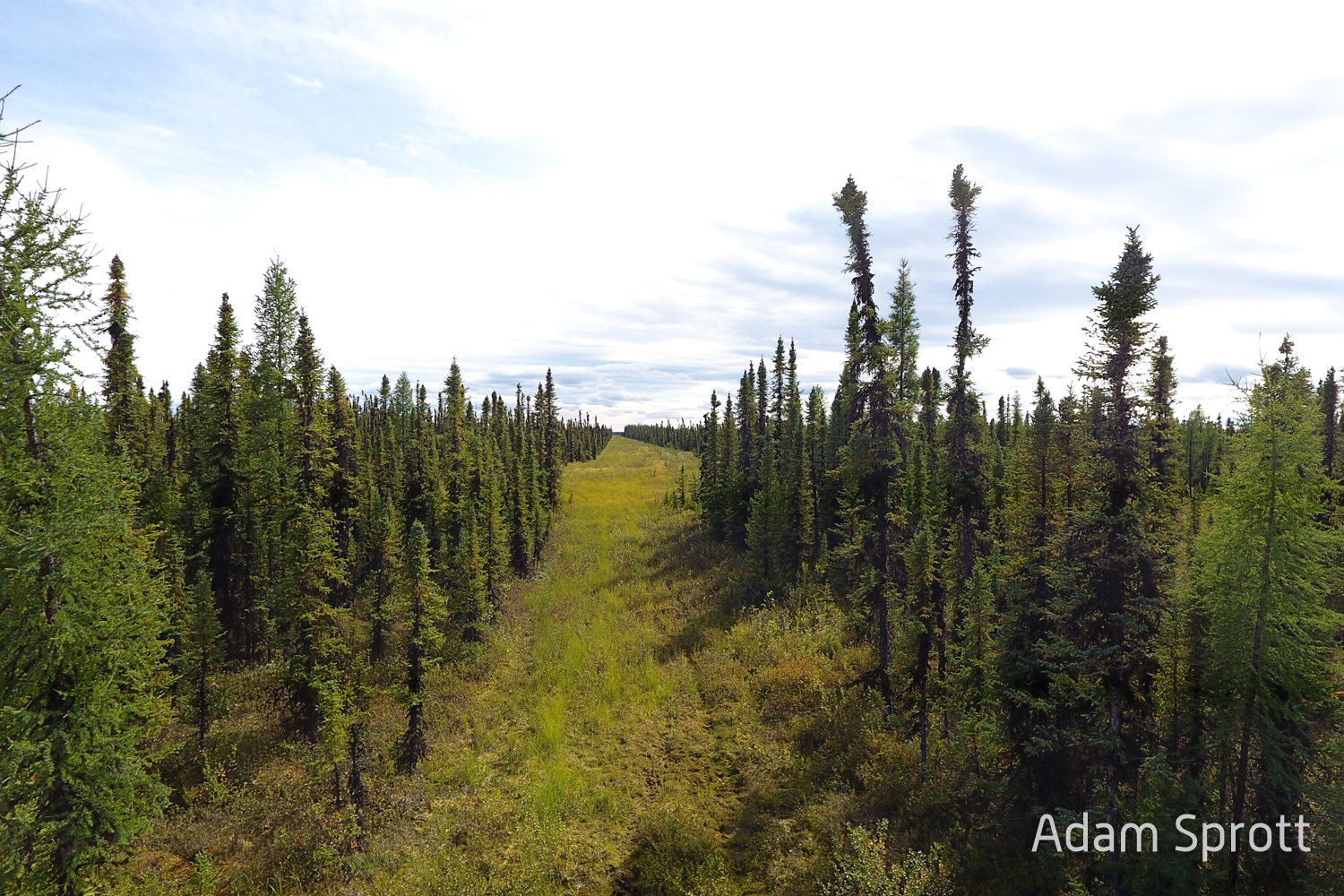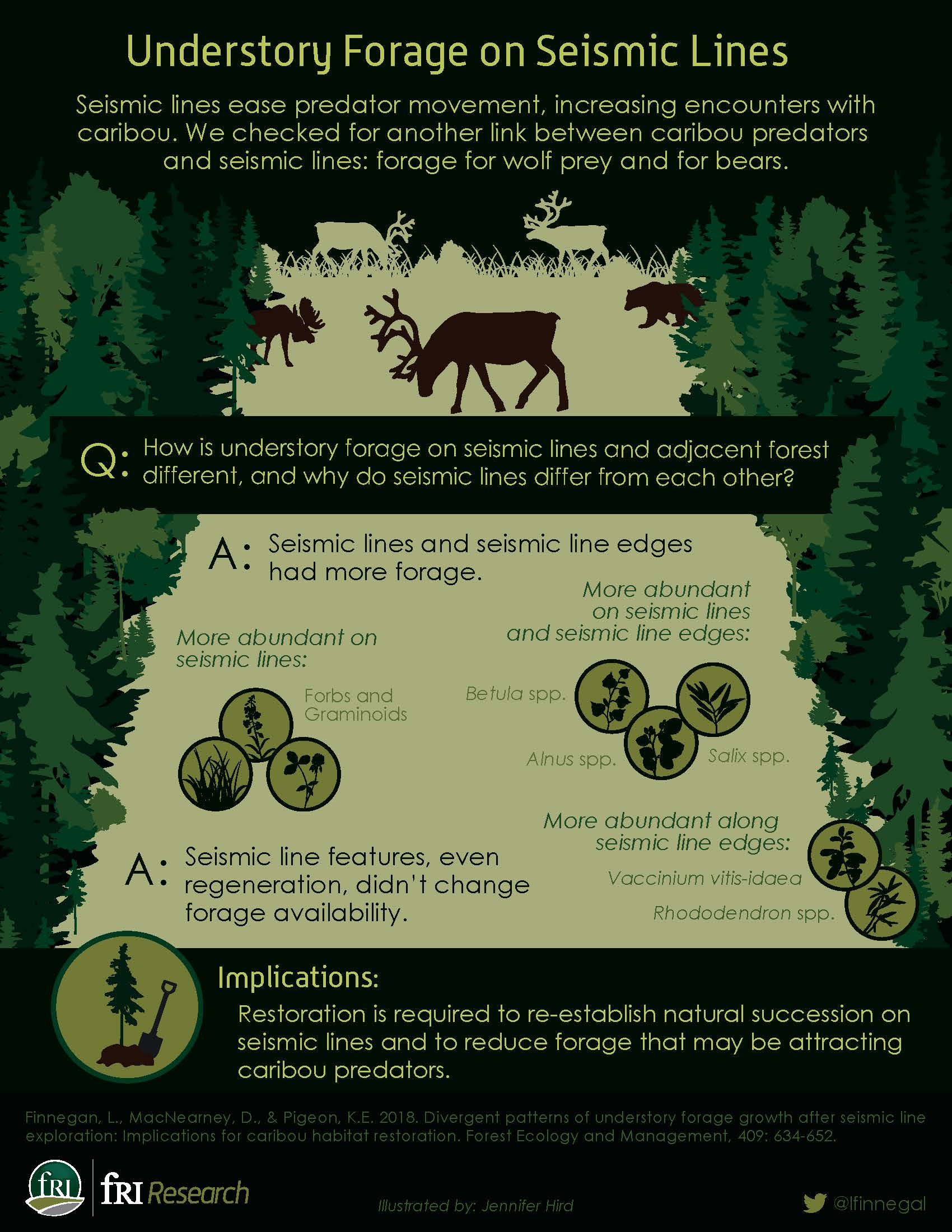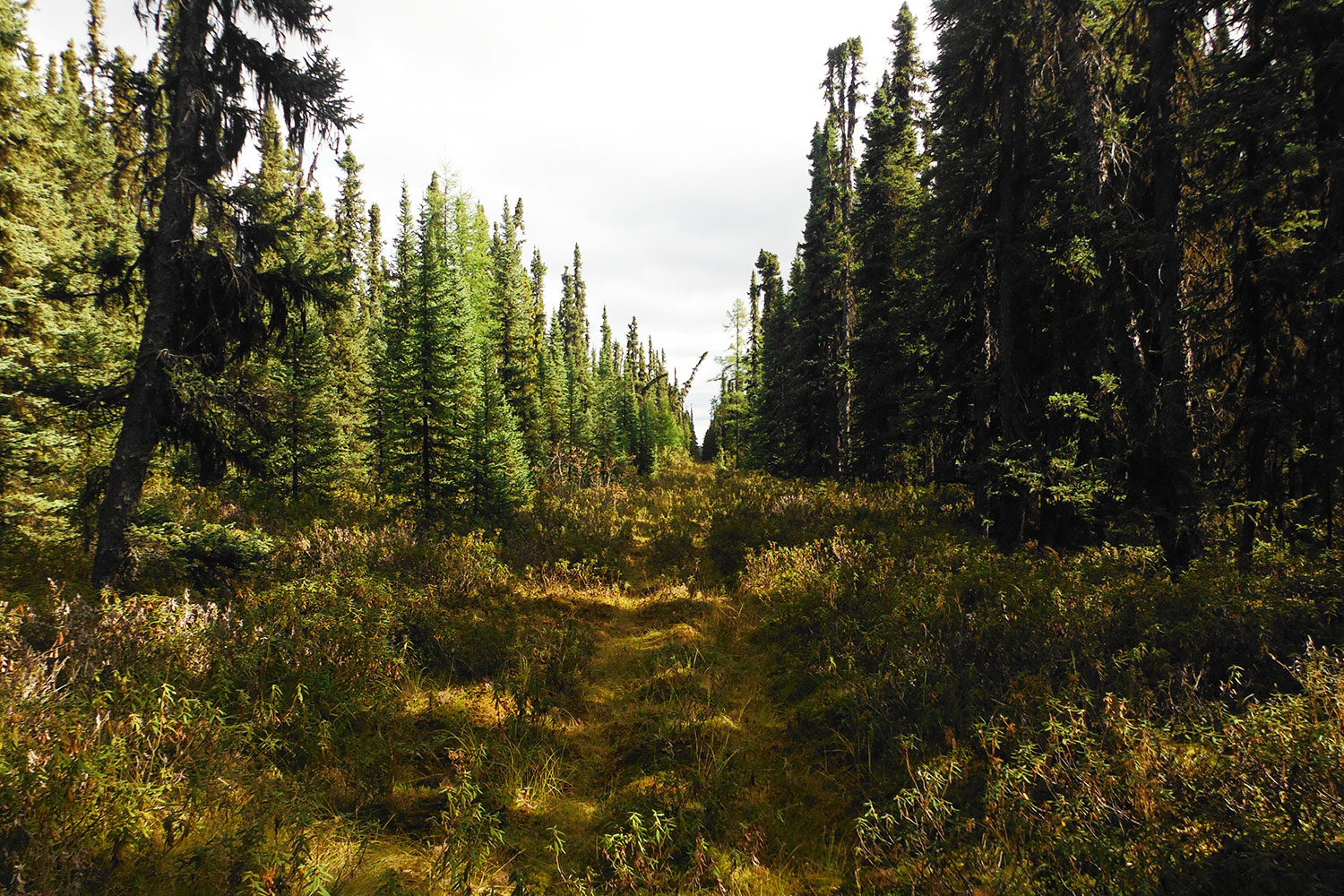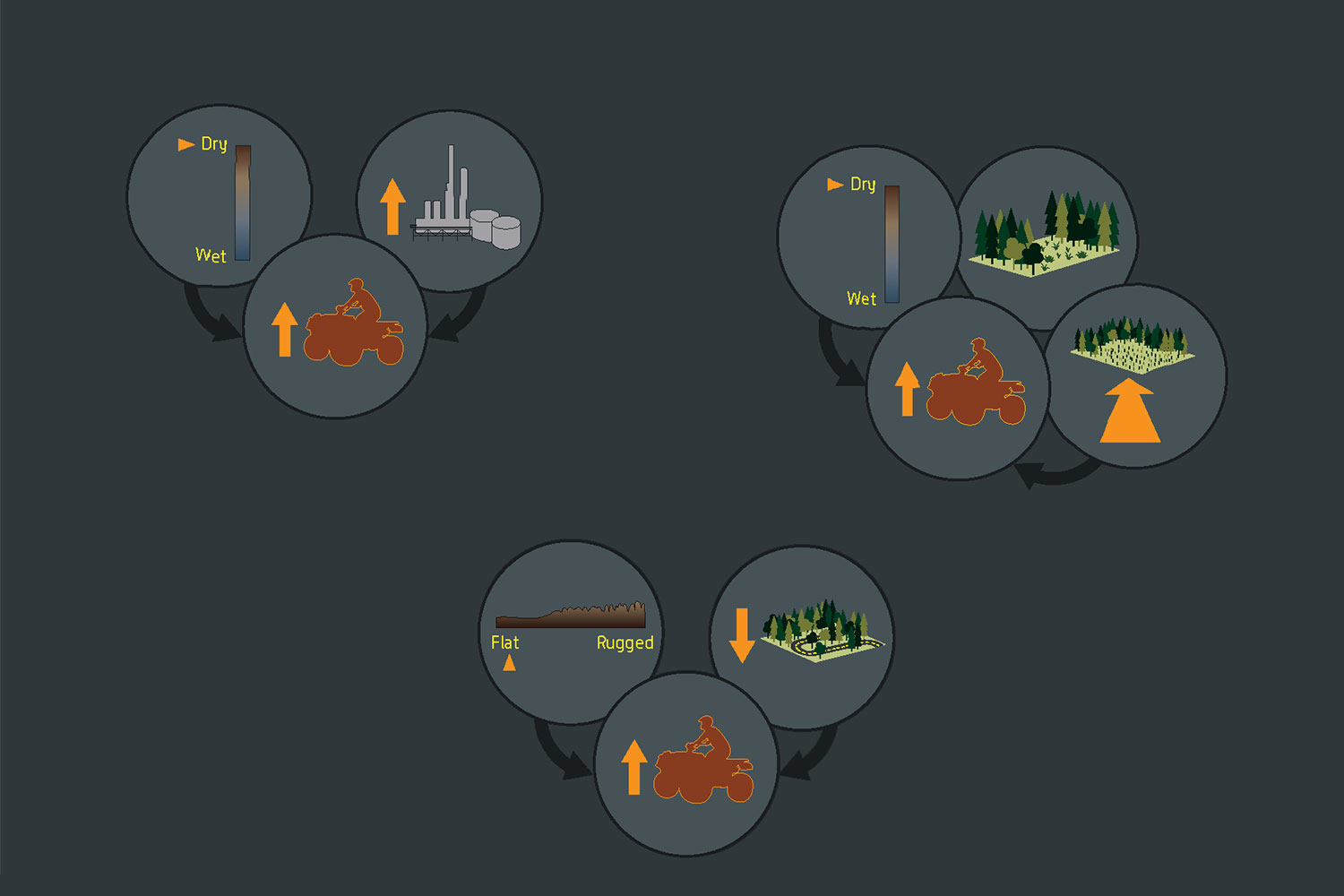
Abstract
Seismic lines are one of the most pervasive disturbances across the boreal forest of western Canada, with densities in Alberta as high as 10 km/km2. The effect of seismic lines and associated habitat fragmentation on boreal wildlife is generally well understood, and most recently seismic lines have been focus of habitat restoration efforts to conserve declining woodland caribou (Rangifer tarandus caribou) populations. However, despite decades of research assessing wildlife response to seismic lines, little is known about the effects of seismic line clearing on the quality of understory forage for wildlife, or about the resilience of boreal understory communities to seismic line clearing. Using field data collected from 351 seismic lines across west-central and north-western Alberta, Canada, and focusing on forage taxa preferred by moose and bears, we investigated whether understory forage taxa composition differed among seismic lines, seismic line edges, and the interior forest, and assessed how this relationship changed as a function of seismic line attributes (ecosite, orientation, level of motorized human use, regeneration). Although we found regional differences and differences among ecosites, generally disturbance-tolerant forbs and graminoids were more abundant on seismic lines, Rhododendron spp. and Vaccinium vitis-idaea were more abundant on edges, and Alnus, Salix and Betula spp. were more abundant on edges and seismic lines. Attributes of seismic lines did not explain patterns of understory forage abundance, although we found positive relationships between motorized human use and abundance of Chamerion spp. and non-target graminoids. With habitat restoration for caribou in mind, this study increases understanding of patterns of understory forage availability on seismic lines, which could help prioritize seismic line restoration efforts to reduce forage attractive to primary wolf prey (moose), and bears, and decrease the spatial overlap between caribou and predators. Overall, our results reveal that even decades after construction, understory forage on seismic lines is different from the interior forest, and is similar to that of harvest blocks. Silviculture and reforestation are recognized as key components for the recovery of harvested areas, and our results suggest that the same treatments may be needed to re-establish or maintain natural successional trajectories on seismic lines. By focusing on habitat changes that influence wildlife responses, such as changes in the presence and abundance of forage used by moose and bears, this study provides valuable insight into the need for active restoration of seismic lines to restore boreal forest ecosystems.
The full text is available here.
Citation
Laura Finnegan, Doug MacNearney, Karine E. Pigeon. “Divergent patterns of understory forage growth after seismic line exploration: Implications for caribou habitat restoration.” Forest Ecology and Management. Volume 409, 1 February 2018. 634-652. ISSN 0378-1127, https://doi.org/10.1016/j.foreco.2017.12.010









